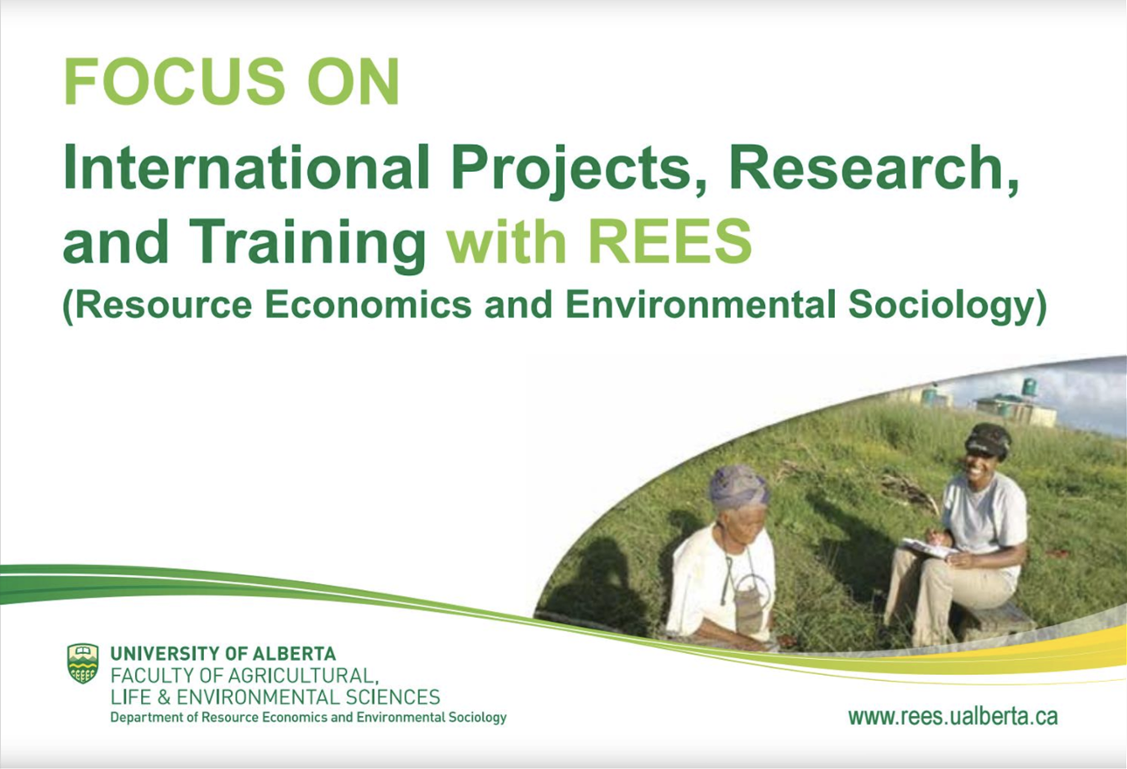Research
Resource Economics and Environmental Sociology's areas of research strength and focus are:

Environmental and Resource Economics
Environmental valuation; market based instruments and institutional arrangements for environmental protection; laboratory and field experiments; economic impacts and responses to environmental change in Indigenous communities and developed/developing countries
Faculty who specialize in this area: Vic Adamowicz, Marty Luckert, Douglas Mugabe, Brent Swallow, Madeline Turland, Bruno Wichmann, Dan Yu

Economics of Agriculture, Food & Agribusiness
Economics of food and nutrition; consumer behavior; demand analysis, regulatory issues; international trade; agribusiness implications; agricultural finance, production and marketing; policy analysis; bio-technology.
Faculty who specialize in this area: Henry An, Sven Anders, Xiaoli Fan, Scott Jeffrey, Philippe Marcoul, Sandeep Mohapatra, Douglas Mugabe, Feng Qiu, Devin Serfas, Dan Yu

Environmental and Resource Sociology
Natural resource and environmental policy and governance; sociology of food, water and energy; rural and Indigenous community well-being; social impacts and responses to environmental change
Faculty who specialize in this area: Debra Davidson, Kevin Jones, Brenda Parlee

International Development
Interdisciplinary research; food security; REDD+; technology adoption; social networks; gender; women's empowerment; social practice; climate change; watershed management.
Faculty who specialize in this area: Henry An, Marty Luckert, Philippe Marcoul, Sandeep Mohapatra, Brenda Parlee, Brent Swallow
Read more
The REES Collection of publications on the Education & Research Archive (ERA) includes:
- Annual Reports
- Capstone Projects
- Industry Focused Annual Reports
- Lists of Theses and Dissertations
- Other Publications
- Project Reports
- Working Papers
